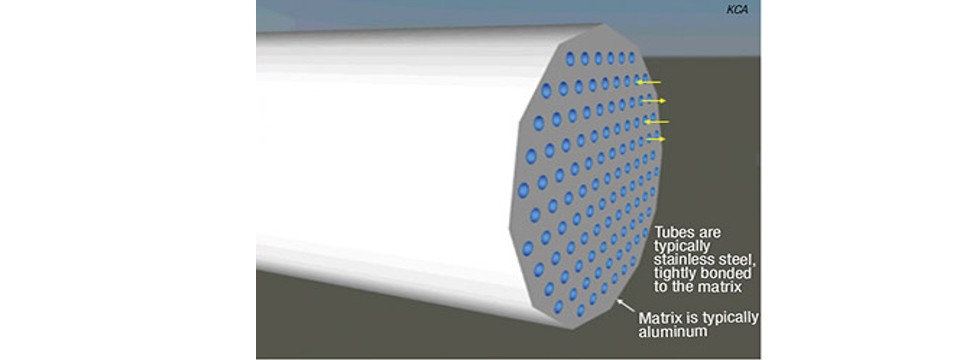New design allows counter current heat exchange with hard to process slurries

Countercurrent heat-exchange with difficult slurries, such as those of mineral ore or stringy vegetables, has not been possible because suspended solids pack and foul the shell of shell-and-tube designs and plug the passages in plate-and-frame units.
Now, a recently patented heat-exchanger design in which a solid matrix of conductive material surrounds two sets of alternating, adjacent tubes makes it possible to effectively transfer heat between two slurries. Developed by the mining engineering firm Kappes, Cassiday & Associates (KCA; Reno, Nev.; www.kcareno.com), the exchanger has the potential to substantially reduce energy and maintenance costs, says the company.
The new design has a similar appearance to a conventional shell-and-tube heat exchanger, but the hollow shell is replaced by a solid heat-exchange matrix of aluminum (diagram). One slurry to be heated or cooled is flowed in one direction through the heat exchange section using one set of stainless-steel tubes, while another fluid is flowed through a second set of parallel tubes in the opposite direction.
The spacing of the tubes is based on mathematical modeling of heat flow between the two intercalated sets of tubes, and is set so that heat flows perpendicularly between adjacent tubes. According to KCA, the tube spacing must be close to maximize perpendicular heat flow, but not too close, which would make construction very expensive.
The patented technology includes a system for coupling the tubes to link modules together to lengthen the heat-exchange range. KCA points out that while the exchanger was designed for mineral slurries, many variations on the concept are possible for other applications.
Source and credit: https://www.chemengonline.com/heat-exchange/



